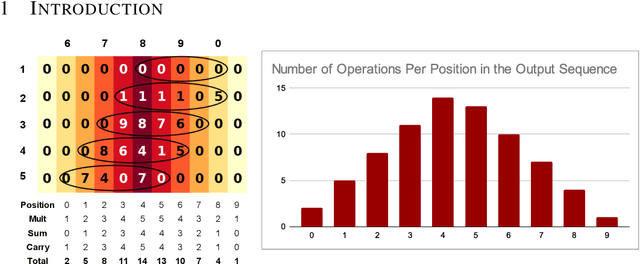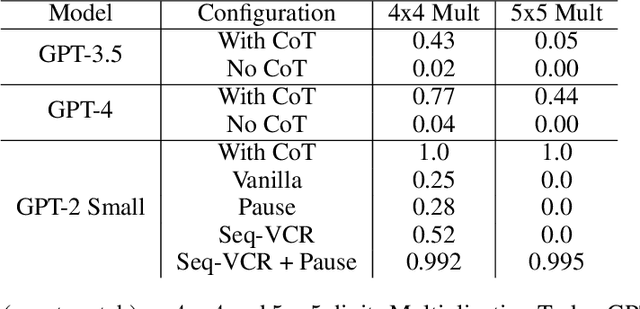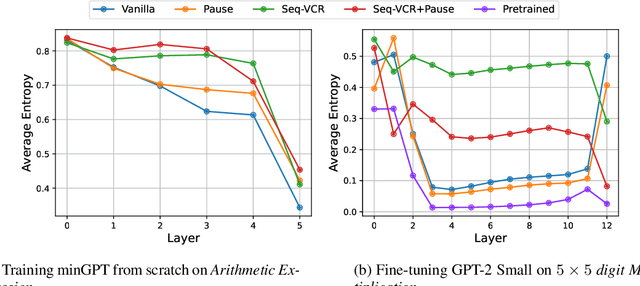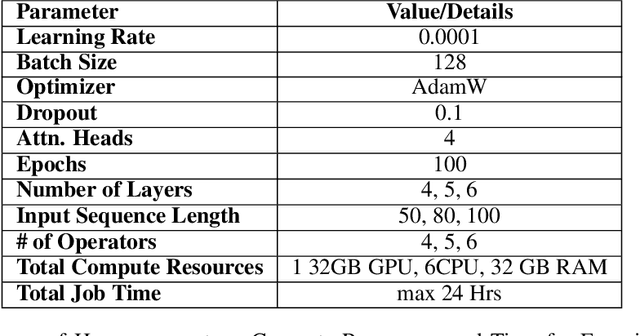Ravid Shwartz-Ziv
Thinking Beyond Tokens: From Brain-Inspired Intelligence to Cognitive Foundations for Artificial General Intelligence and its Societal Impact
Jul 01, 2025Abstract:Can machines truly think, reason and act in domains like humans? This enduring question continues to shape the pursuit of Artificial General Intelligence (AGI). Despite the growing capabilities of models such as GPT-4.5, DeepSeek, Claude 3.5 Sonnet, Phi-4, and Grok 3, which exhibit multimodal fluency and partial reasoning, these systems remain fundamentally limited by their reliance on token-level prediction and lack of grounded agency. This paper offers a cross-disciplinary synthesis of AGI development, spanning artificial intelligence, cognitive neuroscience, psychology, generative models, and agent-based systems. We analyze the architectural and cognitive foundations of general intelligence, highlighting the role of modular reasoning, persistent memory, and multi-agent coordination. In particular, we emphasize the rise of Agentic RAG frameworks that combine retrieval, planning, and dynamic tool use to enable more adaptive behavior. We discuss generalization strategies, including information compression, test-time adaptation, and training-free methods, as critical pathways toward flexible, domain-agnostic intelligence. Vision-Language Models (VLMs) are reexamined not just as perception modules but as evolving interfaces for embodied understanding and collaborative task completion. We also argue that true intelligence arises not from scale alone but from the integration of memory and reasoning: an orchestration of modular, interactive, and self-improving components where compression enables adaptive behavior. Drawing on advances in neurosymbolic systems, reinforcement learning, and cognitive scaffolding, we explore how recent architectures begin to bridge the gap between statistical learning and goal-directed cognition. Finally, we identify key scientific, technical, and ethical challenges on the path to AGI.
From Tokens to Thoughts: How LLMs and Humans Trade Compression for Meaning
May 21, 2025Abstract:Humans organize knowledge into compact categories through semantic compression by mapping diverse instances to abstract representations while preserving meaning (e.g., robin and blue jay are both birds; most birds can fly). These concepts reflect a trade-off between expressive fidelity and representational simplicity. Large Language Models (LLMs) demonstrate remarkable linguistic abilities, yet whether their internal representations strike a human-like trade-off between compression and semantic fidelity is unclear. We introduce a novel information-theoretic framework, drawing from Rate-Distortion Theory and the Information Bottleneck principle, to quantitatively compare these strategies. Analyzing token embeddings from a diverse suite of LLMs against seminal human categorization benchmarks, we uncover key divergences. While LLMs form broad conceptual categories that align with human judgment, they struggle to capture the fine-grained semantic distinctions crucial for human understanding. More fundamentally, LLMs demonstrate a strong bias towards aggressive statistical compression, whereas human conceptual systems appear to prioritize adaptive nuance and contextual richness, even if this results in lower compressional efficiency by our measures. These findings illuminate critical differences between current AI and human cognitive architectures, guiding pathways toward LLMs with more human-aligned conceptual representations.
Layer by Layer: Uncovering Hidden Representations in Language Models
Feb 04, 2025



Abstract:From extracting features to generating text, the outputs of large language models (LLMs) typically rely on their final layers, following the conventional wisdom that earlier layers capture only low-level cues. However, our analysis shows that intermediate layers can encode even richer representations, often improving performance on a wide range of downstream tasks. To explain and quantify these hidden-layer properties, we propose a unified framework of representation quality metrics based on information theory, geometry, and invariance to input perturbations. Our framework highlights how each model layer balances information compression and signal preservation, revealing why mid-depth embeddings can exceed the last layer's performance. Through extensive experiments on 32 text-embedding tasks and comparisons across model architectures (transformers, state-space models) and domains (language, vision), we demonstrate that intermediate layers consistently provide stronger features. These findings challenge the standard focus on final-layer embeddings and open new directions for model analysis and optimization, including strategic use of mid-layer representations for more robust and accurate AI systems.
Video Representation Learning with Joint-Embedding Predictive Architectures
Dec 14, 2024Abstract:Video representation learning is an increasingly important topic in machine learning research. We present Video JEPA with Variance-Covariance Regularization (VJ-VCR): a joint-embedding predictive architecture for self-supervised video representation learning that employs variance and covariance regularization to avoid representation collapse. We show that hidden representations from our VJ-VCR contain abstract, high-level information about the input data. Specifically, they outperform representations obtained from a generative baseline on downstream tasks that require understanding of the underlying dynamics of moving objects in the videos. Additionally, we explore different ways to incorporate latent variables into the VJ-VCR framework that capture information about uncertainty in the future in non-deterministic settings.
Does Representation Matter? Exploring Intermediate Layers in Large Language Models
Dec 12, 2024Abstract:Understanding what defines a good representation in large language models (LLMs) is fundamental to both theoretical understanding and practical applications. In this paper, we investigate the quality of intermediate representations in various LLM architectures, including Transformers and State Space Models (SSMs). We find that intermediate layers often yield more informative representations for downstream tasks than the final layers. To measure the representation quality, we adapt and apply a suite of metrics - such as prompt entropy, curvature, and augmentation-invariance - originally proposed in other contexts. Our empirical study reveals significant architectural differences, how representations evolve throughout training, and how factors like input randomness and prompt length affect each layer. Notably, we observe a bimodal pattern in the entropy of some intermediate layers and consider potential explanations tied to training data. Overall, our results illuminate the internal mechanics of LLMs and guide strategies for architectural optimization and training.
Rate-In: Information-Driven Adaptive Dropout Rates for Improved Inference-Time Uncertainty Estimation
Dec 10, 2024



Abstract:Accurate uncertainty estimation is crucial for deploying neural networks in risk-sensitive applications such as medical diagnosis. Monte Carlo Dropout is a widely used technique for approximating predictive uncertainty by performing stochastic forward passes with dropout during inference. However, using static dropout rates across all layers and inputs can lead to suboptimal uncertainty estimates, as it fails to adapt to the varying characteristics of individual inputs and network layers. Existing approaches optimize dropout rates during training using labeled data, resulting in fixed inference-time parameters that cannot adjust to new data distributions, compromising uncertainty estimates in Monte Carlo simulations. In this paper, we propose Rate-In, an algorithm that dynamically adjusts dropout rates during inference by quantifying the information loss induced by dropout in each layer's feature maps. By treating dropout as controlled noise injection and leveraging information-theoretic principles, Rate-In adapts dropout rates per layer and per input instance without requiring ground truth labels. By quantifying the functional information loss in feature maps, we adaptively tune dropout rates to maintain perceptual quality across diverse medical imaging tasks and architectural configurations. Our extensive empirical study on synthetic data and real-world medical imaging tasks demonstrates that Rate-In improves calibration and sharpens uncertainty estimates compared to fixed or heuristic dropout rates without compromising predictive performance. Rate-In offers a practical, unsupervised, inference-time approach to optimizing dropout for more reliable predictive uncertainty estimation in critical applications.
Seq-VCR: Preventing Collapse in Intermediate Transformer Representations for Enhanced Reasoning
Nov 04, 2024



Abstract:Decoder-only Transformers often struggle with complex reasoning tasks, particularly arithmetic reasoning requiring multiple sequential operations. In this work, we identify representation collapse in the model's intermediate layers as a key factor limiting their reasoning capabilities. To address this, we propose Sequential Variance-Covariance Regularization (Seq-VCR), which enhances the entropy of intermediate representations and prevents collapse. Combined with dummy pause tokens as substitutes for chain-of-thought (CoT) tokens, our method significantly improves performance in arithmetic reasoning problems. In the challenging $5 \times 5$ integer multiplication task, our approach achieves $99.5\%$ exact match accuracy, outperforming models of the same size (which yield $0\%$ accuracy) and GPT-4 with five-shot CoT prompting ($44\%$). We also demonstrate superior results on arithmetic expression and longest increasing subsequence (LIS) datasets. Our findings highlight the importance of preventing intermediate layer representation collapse to enhance the reasoning capabilities of Transformers and show that Seq-VCR offers an effective solution without requiring explicit CoT supervision.
Learning to Compress: Local Rank and Information Compression in Deep Neural Networks
Oct 10, 2024Abstract:Deep neural networks tend to exhibit a bias toward low-rank solutions during training, implicitly learning low-dimensional feature representations. This paper investigates how deep multilayer perceptrons (MLPs) encode these feature manifolds and connects this behavior to the Information Bottleneck (IB) theory. We introduce the concept of local rank as a measure of feature manifold dimensionality and demonstrate, both theoretically and empirically, that this rank decreases during the final phase of training. We argue that networks that reduce the rank of their learned representations also compress mutual information between inputs and intermediate layers. This work bridges the gap between feature manifold rank and information compression, offering new insights into the interplay between information bottlenecks and representation learning.
LiveBench: A Challenging, Contamination-Free LLM Benchmark
Jun 27, 2024



Abstract:Test set contamination, wherein test data from a benchmark ends up in a newer model's training set, is a well-documented obstacle for fair LLM evaluation and can quickly render benchmarks obsolete. To mitigate this, many recent benchmarks crowdsource new prompts and evaluations from human or LLM judges; however, these can introduce significant biases, and break down when scoring hard questions. In this work, we introduce a new benchmark for LLMs designed to be immune to both test set contamination and the pitfalls of LLM judging and human crowdsourcing. We release LiveBench, the first benchmark that (1) contains frequently-updated questions from recent information sources, (2) scores answers automatically according to objective ground-truth values, and (3) contains a wide variety of challenging tasks, spanning math, coding, reasoning, language, instruction following, and data analysis. To achieve this, LiveBench contains questions that are based on recently-released math competitions, arXiv papers, news articles, and datasets, and it contains harder, contamination-free versions of tasks from previous benchmarks such as Big-Bench Hard, AMPS, and IFEval. We evaluate many prominent closed-source models, as well as dozens of open-source models ranging from 0.5B to 110B in size. LiveBench is difficult, with top models achieving below 65% accuracy. We release all questions, code, and model answers. Questions will be added and updated on a monthly basis, and we will release new tasks and harder versions of tasks over time so that LiveBench can distinguish between the capabilities of LLMs as they improve in the future. We welcome community engagement and collaboration for expanding the benchmark tasks and models.
Just How Flexible are Neural Networks in Practice?
Jun 17, 2024Abstract:It is widely believed that a neural network can fit a training set containing at least as many samples as it has parameters, underpinning notions of overparameterized and underparameterized models. In practice, however, we only find solutions accessible via our training procedure, including the optimizer and regularizers, limiting flexibility. Moreover, the exact parameterization of the function class, built into an architecture, shapes its loss surface and impacts the minima we find. In this work, we examine the ability of neural networks to fit data in practice. Our findings indicate that: (1) standard optimizers find minima where the model can only fit training sets with significantly fewer samples than it has parameters; (2) convolutional networks are more parameter-efficient than MLPs and ViTs, even on randomly labeled data; (3) while stochastic training is thought to have a regularizing effect, SGD actually finds minima that fit more training data than full-batch gradient descent; (4) the difference in capacity to fit correctly labeled and incorrectly labeled samples can be predictive of generalization; (5) ReLU activation functions result in finding minima that fit more data despite being designed to avoid vanishing and exploding gradients in deep architectures.
 Add to Chrome
Add to Chrome Add to Firefox
Add to Firefox Add to Edge
Add to Edge